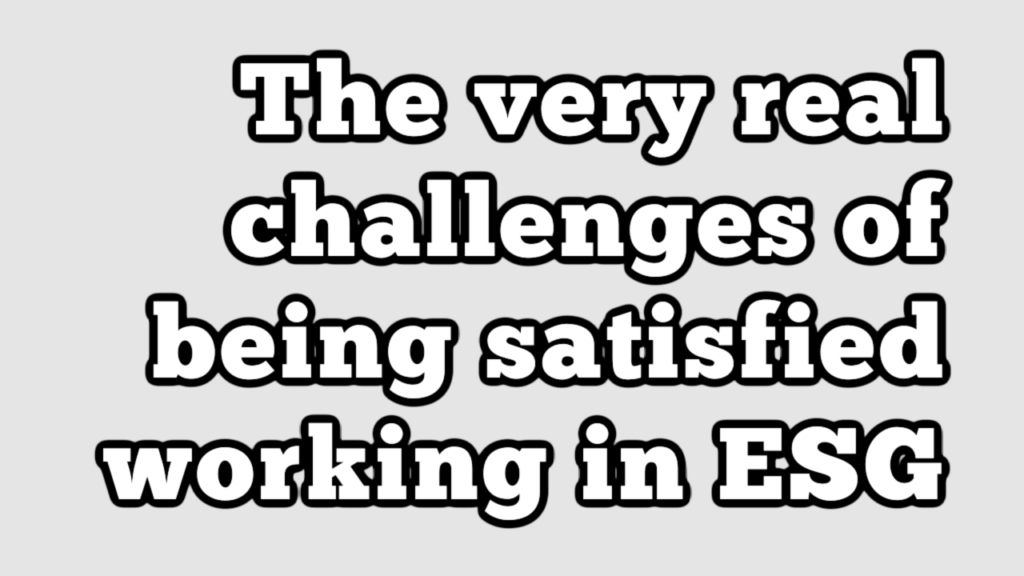The very real challenges of being satisfied working in ESG

Here’s a note from Harald Walkate:
So you finally landed a job in ESG. And now you’re a little confused.
Because for years you’ve been hearing the claims: ESG manages risk, boosts returns, makes a better world, and –last but not least– helps you feel a bit better about yourself.
And then Tariq Fancy, Anand Giridharadas, Aswath Damodaran & Ken Pucker come along and tell you basically this is all wrong. And then Alex Edmans, Clara Miller and, yes, me come along with critiques of the critiques saying that the critics are wrong. Or that they are right but don’t offer alternatives. [All these arguments are linked to in the bottom of this note.]
And then there’s Rob Lake’s post some time ago, sharing a friend’s frustrations: “The desire to make a positive difference remains so strong, it’s just a question of what that looks like now, and how to make it feel truly meaningful and energising amidst the creeping sense that what you’re doing isn’t working. I know so many people with borderline burnout. It’s so hard to voice these questions openly. No deviation of message from the gospel according to ESG.” This post attracted 315 responses & 66 comments, most in agreement.
Finally: a recent recruiter poll of ESG folks showed that 97% of people were open to new roles.
OK, so this is where the attached may come in handy for all of you fighting burn-out, wondering if what you’re doing makes sense, and asking yourself if you change the system from the inside, or become a teacher: as part of my quest to capture complex issues in 1 slide I tried to summarize what 15 years of academic research and practitioners views tell us about:
(1) what works, and doesn’t, in ESG (taking into account that people have different goals with ESG)
(2) how to do the stuff that works, well
and
(3) the 3 options that this leaves investors, or ESG professionals, with
Of course there’s no way to capture all relevant detail or references to papers etc. in one slide, so if you’re wondering what this is based on, please contact me. But I believe this is a pretty good high-level cheat-sheet for all of you who are eager to apply lessons learned from the first 15 years, to deliver some real heavy ESG impact, additionality, materiality and problem-solving the next 15.
